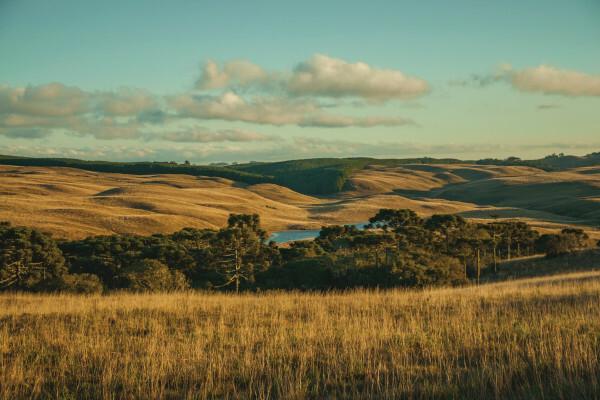O southern region climate It is a type of temperate climate that is called subtropical. Since the states that make up this region are located below the Tropic of Capricorn, climatic factors such as latitude, mainly, and also the air masses and altitude are responsible for the development of a milder climate during most of the year, but with a high temperature range. The southern region of Brazil therefore, it has hot summers and cold winters, with well-distributed rainfall throughout the year. In some areas, low winter temperatures lead to frost and precipitation in the form of snow.
Read too: How is the climate in the Northeast region?
Summary on the climate of the southern region
The climate of the southern region is predominantly subtropical.
The subtropical climate is characterized by the good distinction between the four seasons of the year, high annual temperature range and well-distributed rainfall throughout the year.
Summers in the subtropical climate range from mild to hot, with temperatures between 25 and 30 °C, while winters are cold and can register temperatures below 10 °C.
The formation of frost and precipitation in the form of snow are phenomena that occur during the winter in some locations in southern Brazil.
On the coast of the state of Paraná, the occurrence of the Atlantic tropical climate is identified, characterized by low annual temperature range, high air humidity and lower rainfall in winter compared to other seasons of the year.
Latitude, air masses and altitude are some of the main climatic factors that act on the climatic characteristics of the southern region of Brazil.
The vegetation and climate of the southern region are directly related. The occurrence of rainfall throughout the year and the temperature range provide the formation of coverings such as forests and fields.
What are the climates of the southern region?
The subtropical climate is predominant in the southern region of Brazil, being present in the three states that comprise it. The state of Paraná, however, also registers the occurrence of the Atlantic tropical climate in a narrow strip along its coast.
→ subtropical climate
the subtropical climate It is a type of temperate climate that is present in the southern temperate zone of planet Earth. In Brazil, the subtropical climate occurs in areas located below the Tropic of Capricorn, which is the parallel of 23º27’ S. Consequently, is the predominant climate in the states of the southern region, comprising all of Rio Grande do Sul, Santa Catarina and most of the state of Paraná.
This climate presents the lowest temperatures among all types of climate found in the Brazilian territory. Furthermore, characterized by abundant and well-distributed rainfall throughout the year. this climate type has a high annual temperature range, which allows a good distinction between The four seasons of the year.
The average temperatures of the subtropical climate present in southern Brazil can vary between 15º C in the coldest locations and 22º C in the hottest and most humid areas, such as coastal cities. Maximums reach 30º C and can exceed this value in summer, while in winter thermometers register between 12 and 18º C, with minimums below 10º C being not uncommon in the highest areas.

Annual precipitation in the southern region varies between 1500 and 2000 mm, with the highest values corresponding to the coast of the states. In addition to the rains, precipitation in the form of snow is observed in some locations during the winter, like the cities of São Joaquim (SC), Gramado (RS), Canela (RS), Caxias do Sul (RS) and Urupema (SC). Another meteorological phenomenon recorded in winter is frost (thin layer of ice on soil and vegetation).
→ Atlantic tropical climate
The Atlantic tropical climate is present on the coast of the state of Paraná, in cities like Paranaguá, for example.
This climate, observed in the southern region, Its main feature is the lowest annual temperature range, which means that the difference between maximum and minimum temperatures is small. The average temperature is 22°C. this climate type has high air humidity, and, although the rains occur throughout the year, there is a reduction in the volume of rainfall during the winter months, mainly between June and August.
See too: What are the climates of the Southeast region?
Factors that influence the climates of the Southern region
The southern region of Brazil is the one with the mildest climate in the entire Brazilian territory. One of the main factors that contribute to this fact is latitude, which is directly related to location. In addition to this, there are other important aspects of atmospheric and landscape dynamics that influence in the climate of the southern region of Brazil, such as air masses, maritime conditions, continentality and altitude.
Latitude: the southern region of Brazil is located in the temperate zone of the planet Earth, more precisely in the middle latitude below the Tropic of Capricorn. For this reason, during most of the year, the sun's rays fall more steeply in this area of Brazil, providing the development of milder climates. The exception is summer, the hottest season of the year in the southern states of Brazil and which registers heat intense due to the fact that the sun's rays fall perpendicularly on the southern hemisphere at that time of the year.
Air masses: air masses are fundamental in determining the climate and changes in atmospheric weather in southern Brazil. The active masses during the summer are the tropical continental mass (mTc) and the tropical Atlantic mass (mTa), responsible for raising temperatures and changing the characteristics of local humidity. The performance of the Atlantic polar mass (mPa) in the South region stands out, especially during the winter, when this layer of moving air presents all its characteristics still very intense. The meeting of the polar mass, which is cold, with the warmer masses causes from frontal rains to phenomena such as extratropical cyclones.
Maritime and continentality: Maritime nature is a climatic factor that influences the humidity and temperature range of a given region. Thus, cities in the South that are located on the coast have higher humidity and less thermal variability than cities farther from the coast, in which the main factor is continentality.
Altitude: areas with higher altitudes have milder temperatures than those at lower altitudes, which produces local changes in the climate of the southern region.
Relationship between climate and vegetation in the southern region
The vegetation cover develops according to characteristics of the area such as the type of soil, relief and climate. The climate is decisive due to the energy that is received from the Sun and water availability, and this relationship can be very well observed in the southern region of Brazil.

Due to the occurrence of regular and well-distributed rainfall and the variation in annual temperatures, it is possible to find different plant formations in the South region, highlighting the forest and grassland type vegetation. In the first case, we have the Atlantic Forest, of which it is part the Araucaria forest, and the fields that make up the pampa biome.
Sources
ALBUQUERQUE CAVALCANTI, Iracema Fonseca de; FERREIRA, Nelson Jesuz. Climate of Brazilian regions and climate variability. São Paulo: Text Workshop, 2021.
AYOADE, Johnson Olaniyi Introduction to climatology for the tropics. Rio de Janeiro: Bertrand Brazil, 1996. 4 ed. 332p. Translation by Maria Juraci Zani dos Santos.
IBGE. School geographic atlas. Rio de Janeiro: IBGE, 2018, 8 ed. 224p.
LUCCI, Elian Alabi. Territory and society in a globalized world, 1: high school. São Paulo: Saraiva, 2016. 289p.
MOREIRA, Igor. the geographic space: General and Brazilian Geography. São Paulo: Editora Ática, 47th edition, 3rd reprint. 455p.
Source: Brazil School - https://brasilescola.uol.com.br/brasil/clima-da-regiao-sul.htm

